![]()
This article was originally published by peacefaq.com. It’s reprinted here (in part) for your convenience.
In 1948, the Arab village Deir Yassin, was attacked by Irgun and Lehi freedom fighters and during this attack civilians allegedly were massacred. It’s imported to take notice of what really happened on the 9th april 1948 and before, because Deir Yassin has become a symbol for the anti-Israel lobby. It’s used by Arab propagandists, anti-Zionists, Left-wing Jews and moderate Western intellectuals to provide a basis for widespread allegations against the Israeli state and to question it’s moral standards and obeying of international law if it comes to fighting a war and the war against terrorism. Thus resulting in questioning the legitimacy of the Jewish state and her borders as it is today.
One of the biggest thorns in the sides of the anti-Zionists has been the seeming moral superiority of the returning Jewish refugees of the Diaspora in the resurrection of the state for their nation. A seemingly impossible task for the anti-Zionists is to deflect attention from their naughty Arab children – with their terrorism, war-making, antisemitism, genocidal ideation, Holocaust denial, human rights abuses, repression of basic freedoms, ethnic cleansing, institutionalized rape and slavery. An awesome challenge indeed. Hence the need to establish ‘Moral Relativism’ and ‘Moral Equivalence’. What the anti-Zionists needed was to show that the Jews too have perpetuated wrongs and evils of their own, hence it then appears biased to hold the Arabs responsible for their behavior if we don’t also condemn the Jews.
Of course one would be hard-pressed to find any reasonable person who claimed that the Jews could do no wrong. Indeed both Hitler and Mother Theresa have undoubtedly made ethical mistakes – so do we then conclude that everyone is morally eqivalent, that the world should not hold any single individuals or groups responsible since we are all guilty? Most of us choose not to live in such an anarchist’s utopia; in order for society to function and protect our individual safety, there must be moral standards – a right and a wrong, a good and a bad, to be judged by social standards at the time.
But the effort to cloud such judgements on the Arabs is the goal of the anti-Zionists. Some of them even claim that the Jews are the opressors and that the Arabs are the victims. In order to establish this moral inversion, certain historical events are held up as a banner of Jewish original sin. The single sin most often showcased by the anti-Zionists is ‘Deir Yassin’.
In 1948, the United Nations partitioned the western fraction of the British Mandate of Palestine into a Jewish state and yet another Arab state. The Arab world, instead of rejoicing the creation of a second Arab state in Palestine, rejected the partition, desiring all of Palestine for themselves, and expressing the intention to murder every single Jew: “This will be a war of Extermination and a Massacre which will be remembered for generations to come … Like the great slaughters of the Mongols and the Crusaders“. To fulfil that goal, 5 Arab states invaded the new Jewish microstate. Each Arab villiage in western Palestine had to decide for themselves what kind of role they were to play in the war. The villiage of Deir Yassin decided to fully join the genocidal adventures of the 5 invading Arab states, while a few Arab villages like the nearby Abu Ghosh, decided not to participate.
Thus the villiage of Deir Yassin cast itself on the front lines of that terrible war. What followed is hard to establish for a fact, but what is certain is that both sides used the village for propaganda purposes, obscuring further what happened there, and casting substantial doubt on the anti-Zionist claim of an ‘equalizing’ Jewish sin. For if this is the best the anti-Zionists can come up with, then one can certainly understand their frustration.
Why did the jewish forces attack Deir Yassin?
[Deir Yassin] was an integral, inseparable episode in the battle for Jerusalem… [Arab forces] were attempting to cut the only highway linking Jerusalem with Tel Aviv and the outside world. It had cut the pipeline upon which the defenders depended for water. Palestinian Arab contingents, stiffened by men of the regular Iraqi army, had seized vantage points overlooking the Jerusalem road and from them were firing on trucks that tried to reach the beleaguered city with vital food-stuffs and supplies. Dir Yassin, like the strategic hill and village of Kastel, was one of these vantage points. In fact, the two villages were interconnected militarily, reinforcements passing from Dir Yassin to Kastel during the fierce engagement for that hill.
Did the Jewish fighters massacre the villagers of Deir Yassin?
The first of the Jewish fighting units to reach Deir Yassin was led by a truck armed with a loudspeaker. An Iraqi-born Jew, who spoke fluent Arabic, called out to the residents to leave via the western exit from Deir Yassin, which the attackers had left clear for that purpose. Soon after entering the town, however, the truck was hit by Arab gunfire and careened into a ditch. Repeated efforts by Lehi men to extract the truck, while under fire, proved unsuccessful. Whether or not the truck’s message was heard by the villagers is unclear. Several hundred Deir Yassin residents did flee, although it is not clear if they were responding to the announcements, the sound of gunfire, or word-of-mouth warnings from fellow-villagers close to the battle sites. The IZL and Lehi commanders had expected that large numbers of the residents would flee, and the remaining would surrender, perhaps after token resistance. Instead, both groups of Jewish soldiers, entering the town from different sides, immediately encountered fierce volleys of Arab rifle fire, some of it from the foreign troops who had been reported in the area. IZL deputy commander Michael Harif, who was one of the first to enter Deir Yassin, later recalled how, early in the battle,
“I saw a man in khaki run ahead. I thought he was one of us, I ran after him and told him, ‘Move ahead to that house!’ Suddenly he turned, pointed his weapon at me and fired. He was an Iraqi soldier. I was wounded in the leg.”
Lehi’s Patchiah Zalivensky later recalled that among the Arab soldiers killed by his unit was a Yugoslavian Muslim officer, whose identification papers indicated he had been with the all-Muslim units of the Nazi SS that had been organized in Yugoslavia during World War II by Haj Amin el-Husseini, the Palestinian Arab leader and Nazi collaborator. In an alleyway, Lehi soldier Ezra Yachin came face to face with an Arab armed with a rifle. Instantly he started to release the bolt. The measure of those fearful seconds! Who would shoot first? Who would survive?
“It was I who pulled the trigger first–but it didn’t work. My foe turned to leap over an old wall, and as he did so he shot at me. I felt a pain in my right thigh… Dror [Mordechai Ben-Uziahu] had clambered up onto a rooftop from where he was able to spot my assailant who was dressed in the uniform of an Iraqi officer, and shot him.”
The substantial quantities of weapons and ammunition that the IZL and Lehi men found in Deir Yassin provided additional confirmation of earlier suspicions that the village had been turning into a heavily-armed Arab military post. Yehuda Lapidot, deputy commander of the IZL force in Deir Yassin, later recalled: “A cache of ammunition for English rifles which we found in the village saved the day. We filled the clips for the Bren [machine-gun], distributed weapons to the boys and fought on.” In another house, IZL fighter Yehoshua Gorodenchik discovered an additional 20 clips of ammunition for the Bren gun. Lehi soldiers David Gottlieb, Moshe Barzili, and Moshe Idelstein found a huge quantity of Czech rifle bullets which did not fit their rifles; they offered to trade 6,000 of them to the Haganah for 3,000 British bullets.
The Jewish fighters’ advance into Deir Yassin was painstakingly slow because of the intense Arab firepower. The IZL’s Reuven Greenberg reported later that “the Arabs fought like lions and excelled at accurate sniping.” He also noted that “[Arab] women ran from the houses under fire, collected the weapons which had fallen from the hands of Arab fighters who had been wounded, and brought them back into the houses.” There were also instances in which, after storming a house, dead Arab women were found with guns in their hands, indicating that they had taken part in the battle. “To take a house,” Ezra Yachin recalled, “you had either to throw a grenade or shoot your way into it. If you were foolish enough to open doors, you got shot down–sometimes by men dressed up as women, shooting out at you in a second of surprise.”
When they tried to storm some of the individual stone houses, the Lehi fighters were surprised to discover that most of the homes had doors made of iron, not wood as their pre-battle briefings had led them to believe. The attackers had no choice but to attach powerful explosives to the doors to blow them open, and a number of the inhabitants were inadvertently killed or wounded in the explosions. Slowly, house by house, the Lehi forces advanced.
On the other side of the village, meanwhile, the IZL soldiers were having less success. By 7:00 a.m., the IZL commanders, stymied by the Arab resistance and their own mounting casualties, sent a messenger to the Lehi camp that they were seriously considering retreating from the town altogether. The Lehi commanders told the messenger to inform the IZL that Lehi had already penetrated the village and expected victory soon. The IZL quickly arranged to receive a supply of explosives from their base in Givat Shaul, and proceeded to blast their way into house after house. In some cases, entire sections of the houses collapsed from the force of the explosion, burying the Arab soldiers as well as civilians who were still inside. It is unclear if the civilians had chosen to stay of their own free, or were held hostage by Arab soldiers who thought that their presence would deter the Jewish forces — a tactic frequently employed by Arab terrorists in southern Lebanon in our own era. At the same time, there were numerous instances of Arabs emerging from the houses and surrendering; more than 100 were taken prison by the end of the day. At least two Haganah members who were on the scene later recalled hearing the Lehi repeatedly using a loudspeaker to implore the residents to surrender. There were also instances in which Arabs feigned surrender, then produced hidden weapons and shot at their would-be Jewish captors.
Did the Jewish fighters rape Arab women during the Deir Yassin battle?
As noted earlier, Dr. Engel, who accompanied Jacques de Reynier of the Red Cross, reported that he “did not see any signs of defilement, mutilation, or rape.” Daniel Spicehandler, a member of a Haganah unit sent to assist the IZL, said later: “So far as I saw, there was no rape or looting.” An Arab survivor of the Deir Yassin battle, Muhammad Arif Sammour, told author Eric Silver emphatically that there were no sexual attacks. Silver wrote: “Sammour, who has no reason to minimize the atrocities, is convinced that there were no sexual assault: ‘I didn’t hear or see anything of rape or attacks on pregnant women. None of the other survivors ever talked to me about that kind of thing. If anybody told you that, I don’t believe it.'” Sammour’s statement is corroborated by the testimony of two Jewish doctors physicians, Drs. Z. Avigdori and A. Droyan. At the request of the Jewish Agency, Avigdori and Droyan were sent by the Histadrut Medical Committee [the Labor Zionist-affiliated trade union], in Jerusalem, to Deir Yassin on Monday, April 12. They examined the bodies and reported that “all the bodies were clothed, the limbs were intact, and no sign of mutilation was visible on them.”
How many were killed?
“I know when I speak that God is up there and God knows the truth and God will not forgive the liars,” said Radwan, who puts the number of villagers killed at 93, listed in his own handwriting. “There were no rapes. It’s all lies. There were no pregnant women who were slit open. It was propaganda that… Arabs put out so Arab armies would invade,” he said. “They ended up expelling people from all of Palestine on the rumor of Deir Yassin.”
— Mohammed Radwan, fought and survived the Deir Yassin battle, reported by Paul Holmes, Middle East Times, 20-April-1998
The Bir Zeit study’s description of the 1948 battle of Deir Yassin began with the hyperbole typical of many accounts of the event, calling it “a massacre the likes of which history has rarely known.” But unlike the authors of any other previous study of Deir Yassin, the Bir Zeit researchers tracked down the surviving Arab eyewitness to the attack and personally interviewed each of them. “For the most part, we have gathered the information in this monograph during the months of February-May 1985 from Deir Yassin natives living in the Ramallah region, who were extremely cooperative,” the Bir Zeit authors explained, listing by name twelve former Deir Yassin residents whom they had interviewed concerning the battle. The study continued: “The [historical] sources which discuss the Deir Yassin massacre unanimously agree that number of victims ranges between 250-254; however, when we examined the names which appear in the various sources, we became absolutely convinced that the number of those killed does not exceed 120, and that the groups which carried out the massacre exaggerated the numbers in order to frighten Palestinian residents into leaving their villages and cities without resistance.” The authors concluded: “Below is a list of the names and ages of those killed at Deir Yassin in the massacre which took place on April 9, 1948, which was compiled by us on the basis of the testimony of Deir Yassin natives. We have invested great effort in checking it and in making certain of each name on it, such that we can say, with no hesitation, that it is the most accurate list of its type until today.” A list of 107 people killed and twelve wounded followed.
Read here what Menachim Begin, who participated as an Irgun fighter in the attack, said about Deir Yassin.
You might also want to read about Deir Yassin at, 2nd-thoughts.org and Deir Yassin Massacre.



 RSS
RSS



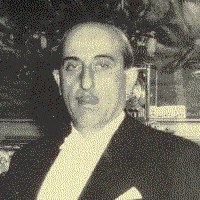
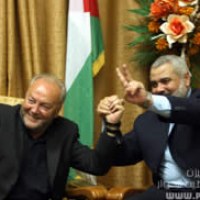
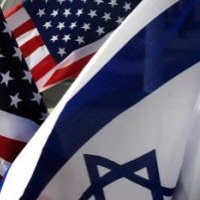
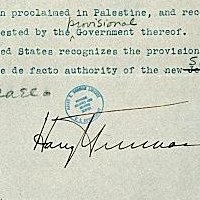
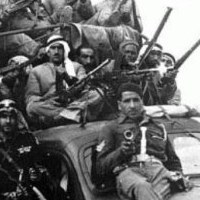




Posted new article @ crethiplethi.com about What happened at Deir Yassin? http://bit.ly/DAQ1Q
https://www.crethiplethi.com/what-happened-at-deir-yassin/israel/war-of-independence/2009/
[…] reside in the village. For the true story of propoganda that backfired on its source, click here or here. In a later BBC documentary, “The 50 Years War”, Arab residents of the village […]
[…] links the dismantling of the Jewish community of Iraq directly to the controversial events at Deir Yassin, the Arab village that was captured by Israel during the Arab-Israeli war of 1948 and where […]